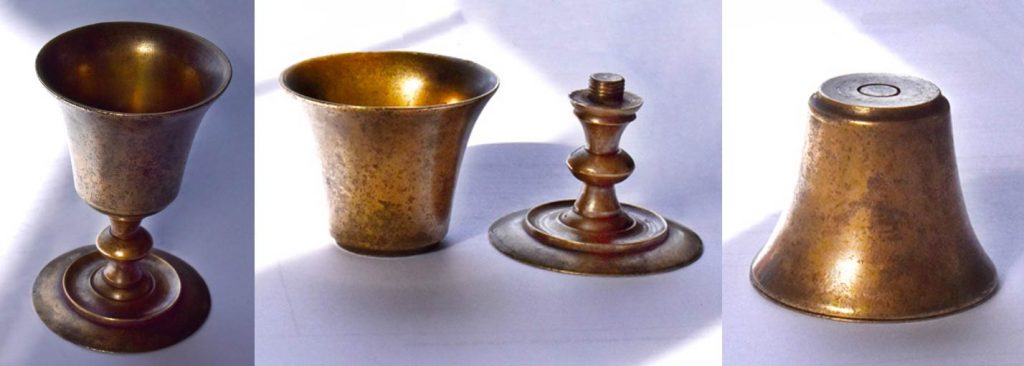The penal laws, especially in Ireland, were a series of laws imposed in the seventeenth and early eighteenth centuries on Irish and English Roman Catholics and to a lesser degree, on Protestant dissenters.
Enacted by the Irish Parliament, these laws secured the then Protestant Ascendancy, by concentrating property and public office into the hands of the established Church of Ireland, latter who subscribed to the Oath of Supremacy, thus acknowledging the reigning British monarch as the supreme governors of matters, both spiritual and worldly.
Catholic bishops were banished completely from Ireland, while Parish Priests had to be ‘registered’ and also take the Oath of Abjuration, latter which involved swearing an oath of loyalty to the protestant succession and denying the son of Catholic James II, deposed in 1688.
Catholics were forbidden to have schools of their own or to have their children educated by Catholic teachers. No Roman Catholic could own a horse worth more than £5. They were forbidden to buy land, and they could not lease property for more than 31 years, while at the same time having to pay a rent that was to be at least-two thirds of the value of said land. Catholic could not carry arms, while the ‘Laws of Inheritance’ were altered allowing a son or daughter, who adopted the Protestant Religion, to become the sole heir/heiress to all property.
Various acts passed in the 16th and 17th centuries prescribed fines and imprisonment for participation in Catholic worship and severe penalties, including death, for Catholic priests who practiced their ministry in Ireland.

Pic: G. Willoughby.
Many older priests, however, refused to leave the country. They wore lay clothes, took up lay employment often as farm labourers, and ministered in secret to their flock. Mass was held, when possible, in the open air using a large flat rock; often a large stone taken from a church ruin, serving as an altar, in a sheltered part of a field, wooded area or barn. Because these activities were illegal, Mass were never scheduled and such occurrences was communicated verbally between those of the faith.
Lookouts were posted to keep watch for the dreaded ‘Red Coat’ army, who were always on the alert for large Catholic assemblies.
Most Bishops were obliged to leave the country at this time and eventually only two remained, same working incognito as parish priests. It was hoped that without Bishops, priests could no longer be ordained, resulting over time to the eradication of such persons over time.
Spying was encouraged. There were severe penalties for Catholic bishops and priests who remained in Ireland without permission. A reward of £20.00 was offered for information leading to the capture of a priest, and £50.00 for the capture of a Bishop.
Such rewards led to the arrival of the dreaded “priest hunter”. One of the most notorious priest hunters being John Moloney, Ballintubber Co. Mayo. To escape hanging for horse stealing, he was persuaded to become the priest hunter known as “Sean an tSagairt”, who had the protection of the British “Red Coat Army”, wherever he was summoned or went.
The custom of placing a lighted candle in the window of homes at Christmas is believed to come from Penal times. It was a signal to any wandering priest that it was a ‘safe house’, and that the family wished to receive the Blessed Sacraments.
Dublin born philosopher, Anglo-Irish statesman and member of Parliament (1766 and 1794), Edmund Burke, himself a Roman Catholic, the offspring of a Roman Catholic mother Mary (latter a cousin of Nano Nagle, who founded the ‘Sisters of the Presentation of the Blessed Virgin Mary ) and father Richard, a member of the Church of Ireland; described these penal laws as “a machine of wise and elaborate contrivance, as well fitted for the oppression, impoverishment and degradation of a people, and the debasement in them of human nature itself, as ever proceeded from the perverted ingenuity of man”.
It was under such penal laws that brass and bronze Communion Chalices, such as that pictured above, were made secretly in the 17th and 18th century and used by Irish priests to discreetly minister to their flock. When not in use, the stem and the bell-shaped cup could be detached and easily hidden.
Catholic relief efforts in the late 18th century led eventually to the repeal of most of the Penal Laws by 1793. However, Catholics would continue to be hindered in regards to government service and participation until the passage of Catholic emancipation in 1829.
The Emancipation Act of 1829 admitted Irish and English Roman Catholics into Parliament and to all but a handful of public offices. Daniel O’Connell’s (1775-1847), Emancipation Act of 1829 admitted Irish and English Roman Catholic men into Parliament and to all but a handful of other public offices, but reduced the number of Irish peasants entitled to vote.
After 1829, Parliament no longer acted exclusively for members of the Church of England.

Leave a Reply